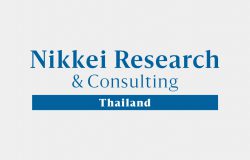In our previous article, we explored how to inspire employees to view themselves as more than just workers and to become company ambassadors. We also looked at what makes employees feel that their company is a great place to spend their entire careers with. These are key goals for building a sustainable success. However, building a great workplace is not enough. What then should be the aspirational goal of your organization? The answer is: to build the “best” company.

The Best is Different for Everyone
Every company is different, and every employee is different. Therefore, it’s important to understand these differences. What do employees think when they are asked to describe their ideal workplace – the best place to work? In our latest in-depth survey*, this was the final question we asked. Besides the commonly expressed comments summarized in our previous articles, here are some uniquely interesting responses:
- Should be sympathetic, understand the work of others or have the spirit to help do work for the company in order to move the company forward. Better than to sit around and wait to find fault. (ควรเห็นอกเห็นใจกัน เข้าใจในส่วนงานของคนอื่นหรือมีน้ำใจที่จะช่วยกันทำงานให้บริษัทเดินไปข้างหน้า ดีกว่ามานั่งคอยจับผิดกัน)
- The organization listens to problems in work Including finding solutions to improve efficiency. (การที่องค์กรรับฟังปัญหาในการทำงาน รวมถึงหาข้อแก้ไขเพื่อเพิ่มประสิทธิภาพให้ดียิ่งขึ้น)
- The company has good policies focusing on the benefits of society as a whole and sustainable environmental conservation. (บริษัทมีนโยบายที่ดีมุ่งเน้นประโยชน์ของสังคมส่วนรวม และการอนุรักษ์สิ่งแวดล้อมอย่างยั่งยืน)
- Has clear duties, not intrusive, does not rely on connections, easy to investigate. (มีหน้าที่ชัดเจน ไม่ก้าวก่าย ไม่มีระบบเส้นสาย ตรวจสอบง่าย)
- There are not many people around to make it difficult to do work. My work I can do alone without anyone interfering. It’s easy and comfortable physically and mentally. (มีคนไม่เยอะทำให้ไม่วุ่นวาย งานที่ทำก็ทำคนเดียวไม่มีใครมายุ่ง ง่ายและสบายกายสบายใจ)
- Has innovative technology and continuous support for learning. (มีนวัตกรรมทางเทคโนโลยีและมีการสนับสนุนเรื่องการเรียนรู้ด้านต่างๆต่อเนื่อง)
- Pay attention to all employees without dividing it into favorite subordinate groups. (ใส่ใจพนักงานทุกคน โดยไม่แบ่งว่าเป็นลูกน้องคนโปรด)
- Continuously improving the workspace. (ปรับปรุงพื้นที่ทำงานตลอดเวลา)
- Allows me to show my abilities and provides opportunities to progress in return. (ให้แสดงความสามารถและเสนอความก้าวหน้าเป็นการตอบแทน)
- The job matches the position applied. Not too much work. Have proper holidays. (งานตรงกับตำแหน่งที่สมัคร งานไม่เยอะจนเกินไป มีวันหยุดที่เหมาะสม)
What can we learn from such remarks? What does it mean for companies that strive to meet these ideal factors? It means a one-size-fits-all approach may not be the most effective way. It means companies need to truly understand what is in the hearts and minds of their employees. It means taking one specific action is more impactful than taking many generic ones. It means that companies need to also define what makes them unique and communicate this in order to attract those who are likely to align with similar beliefs.

Building the Best Together
There is no such thing as a great place to work. Great is just an interpretation defined by employees based on their expectations of the job. It is based on comparisons to options available. It is based on pros and cons of their current employer versus previous workplaces. Thus, it is about how close a company can meet each and every employee’s expectations. Companies need to create a way to identify, measure, then manage these expectations. Doing so will help bring out the best from all employees, when they feel that their company is truly the best.
Finally, how can companies know how their employees truly feel about their company? Companies can of course ask that to their employees in a one-on-one meeting or by setting up a channel such as a feedback box. But if there is a concern that employees wouldn’t answer honestly due to a fear of receiving negative feedback, use of a third party can be one solution. Nikkei Research & Consulting has been working in various industries to measure employees’ “Hatarakigai” and analyzing companies’ strength and weakness in engaging with employees. By using a third-party, companies can acquire honest and more accurate evaluations and opinions while keeping safe their privacy and confidentiality.
If you are interested in our workplace solutions, please visit this page for more information. (日本語ページはこちらから)
* The in-depth survey was an online research conducted during December 2019 with white-collar employees in Thailand primarily based in greater Bangkok across four generational demographics based on responses from 200 total full-time workers.



